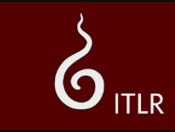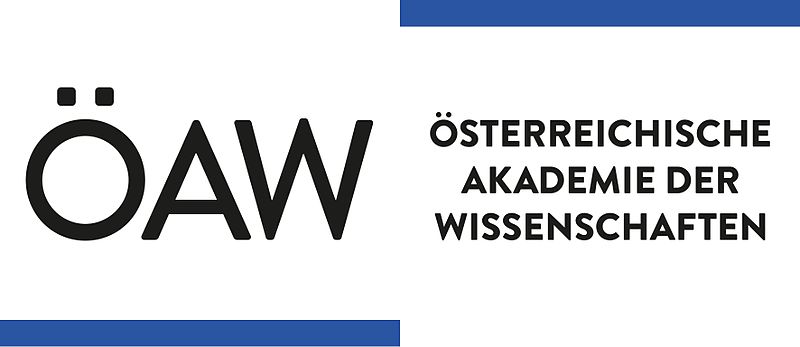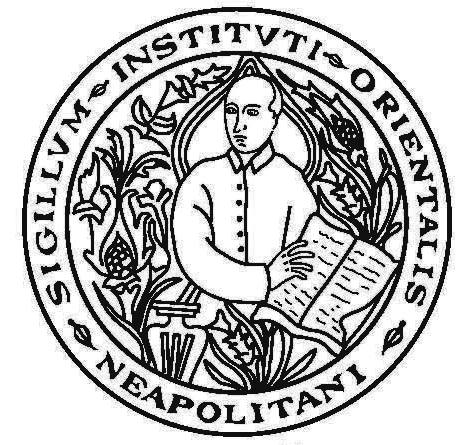













| Home | History | Aims & Salient Features | People | Institutions | Users’ Guidelines | ITLR Search | Terms of Use | Contact Us |
The Indo-Tibetan Lexical Resource (ITLR) is a collaborative lexical project built around Sanskrit Headwords which are ordered under the rubrics (1) Word/Term/Phrase, (2) Place Name, (3) Personal name, or (4) Title of Scripture/Treatise. It aims to provide occurrences of these lexical items in Indic sources, attested Tibetan translations of them, modern renderings, and references to them in discussions in academic works. The ITLR involves a number of scholars from around the world in various capacities, including editors, advisors, contributors, and visiting fellows, and it cooperates with several institutions.
























1. To search for a Headword or main entry, click “ITLR Search.”
2. You may choose between (a) “General Search” and (b) “Search by Taxonomical Labels”
(a) “General Search”: Type the Sanskrit word into “Input Search Word.” Diacritics can be ignored (e.g., for jñāna type jnana). If you wish to search with diacritics, click the button “diacritical” and select the required diacritics. When you click “Search,” the word you have entered will be searched for as a “Headword” (including its “Variant”). A list of hits will be displayed. If you wish to search in the entire entry, “open” “Search Options,” which will allow you to choose between the search options “Headword” and “All,” and/or select the option “Strict Search.” You may also turn “Off/On” the search option according to “Taxonomical Labels” or the option “Preview” (which allows you to preview the hits before opening them).
(b) “Search by Taxonomical Labels”: The database can also be searched in reliance on the taxonomical labels displayed in the dialog window. If you tick, for example, the taxonomical label “MS culture” (i.e., manuscript culture), several hits containing words relating to manuscript culture will show up on the left.
When viewing an entry, you can see an overview of the relationship of entries via bibliographical sources by clicking the button “References” found beside the Headword: The “Main Entry” (i.e., the entry currently viewed) is marked yellow, while the “References” cited in this entry (except for indices) are marked purple, and other entries in which these references are also cited are marked green. This function is currently experimental and will be further developed in the future. Clicking on the abridged bibliographical references will open a window containing the full bibliographical references followed by a list of all other entries that contain references of that particular source. Clicking on links referring to other entries will take you there. If the linked entry has not yet been published, a message will pop up accordingly. If the entry viewed has been linked by other entries, these entries will be listed on the right top corner as “Linked by.” View these entries by clicking on them.








The overriding objective of the ITLR is the creation of a reliable and expandable lexical resource that facilitates the study of Indian and Indo-Tibetan Buddhism as well as the investigation of many texts and ideas transmitted via Indic and Tibetan sources that are not exclusively Buddhist. Designed as a digital platform for researchers from the fields of classical Indology, Tibetology, and Buddhology, the ITLR accumulates and stores lexical items that are the products (or by-products) of research carried out within the framework of selected projects devoted to the investigation of Indian and Indo-Tibetan Buddhist literature, and that in many cases end up tucked away in scholarly footnotes. It intends to provide scholars with information about lexical items of various kinds, and in the long term will be able to provide the necessary infrastructure for collaborative research and other forms of cooperation, including cooperation between traditional and modern academics. It aims to become a digital treasury of reliable lexical data that serves the broader scholarly community interested in Indic and Tibetan compositions and thought.
One of the special features of the ITLR is that it attempts to provide for the individual Sanskrit Headwords equivalents in other Indic languages and in Tibetan, together with attestations in the form of references to primary and/or secondary sources. This is also the case for fixed enumerative sets (known in Tibetan as chos kyi rnam grangs) inasmuch as both the occurrence of the set as such as well as the bilingual individual items are verified and backed up by sources.
The fact that the ITLR is an Indo-Tibetan lexical resource has consequences for both its structure and content:
To begin, the database’s point of departure, namely, the Headword, is in Sanskrit. In accordance with the linguistic situation of Buddhist Sanskrit texts, Headwords from classical Sanskrit as well as Headwords from the different varieties of hybrid Sanskrit, especially those assessed by Franklin Edgerton (1953) as belonging to ‘Buddhist-Hybrid Sanskrit,’ are taken into consideration. Equivalents of Sanskrit terms in other Indic languages may be included as well, though not as independent Headwords.
Second, the database attempts to provide Tibetan equivalents for the Headword whenever possible. Contributors are also encouraged to add equivalents from other non-Indic Buddhist languages (e.g., Chinese) whenever this might be desirable or necessary from an Indological and general Buddhological perspective.
In terms of its concept, nature, structure, content, scope, target, and not least the degree of accuracy and reliability strived for, the ITLR database is unique. It does not duplicate any existing online or offline Indo-Tibetan lexical source/resource. In general, scholars engaged in the study of Indo-Tibetan Buddhist texts and ideas lack a Sanskrit-Tibetan lexical resource that caters to their needs and is sufficiently reliable—be it traditional or modern, electronic or printed, accessible online or offline. The raison d’être of the ITLR database is to redress the situation and try to fill this gap. Some traditional Sanskrit-Tibetan lexicons are indeed available, or rather what may be more fittingly characterized as bilingual lists of words (i.e., skad gnyis shan sbyar), such as those by mDo-mkhar-ba Tshe-ring-dbang-rgyal (1697–1763), Mi-pham rNam-rgyal-rgya-mtsho (1846–1912), and dMu-dge bSam-gtan (1914–1993). But these works (a) are riddled with scribal and other errors, particularly in their Sanskrit sections, partly because they are often based on older lexicographical lists which in turn also contained numerous errors, (b) have not been thus far properly edited, (c) as a rule provide no sources, and (d) occasionally contain falsely ‘reconstructed’ and thus ‘ghost’ Sanskrit words. Thus, these skad gnyis shan sbyar sources are actually unusable as they now stand. The ITLR, however, does not disregard these sources, but attempts, whenever possible, to (a) record the Sanskrit-Tibetan correspondence found in them under the section “Tibetan Rendering/s of the Skt Headword: In Sources with Bi/Multilingual Attestations” (which is second in the rank of sources for bilingual attestations), (b) cross-check against other Sanskrit sources and ensure that the word exists and is correct, and (c) point out any errors (if detected) and propose corrections.
The ITLR also integrates, whenever applicable, the lexical entries in the Sanskrit-Tibetan lexicons known as the Mahāvyutpatti and Madhyavyutpatti (≈ sGra sbyor bam po gnyis pa), and likewise attempts to correct mistakes of various kinds found in the existing editions. While the entries in the Mahāvyutpatti have been incorporated into one of the database’s four categories (i.e., Word/Term/Phrase, Personal Name, Place Name, and Title of Scripture/Treatise), an attempt has been made to retain one of the special features of the Mahāvyutpatti, namely, its thematic or topical categorization. This has been realized through the section “Enumerations,” which reflects what the Tibetan scholarly tradition attempted to achieve through a type of literature called ‘numerical lists of key Dharmic terms or concepts’ (chos kyi rnam grangs). The ITLR also relies on modern Sanskrit-Tibetan lexical works, particularly indices, which serve as secondary sources for bilingual Sanskrit-Tibetan attestations for the ITLR. To date, several indices have been considered, selected in order to cover different literary genres and philosophical directions, namely, the Abhidharmakośabhāṣya (Hirakawa 1978), the deity list of the Vajrāvalī (Mori 2009), the Saṃvarodaya (Tsuda 1974), and the Suvarṇaprabhāsottama (Nobel 1950). Here, too, errors are pointed out and addressed by the ITLR editors. Other indices have been occasionally considered as well.
Modern dictionaries have additionally been taken into consideration. These include J. S. Negi’s impressive sixteen-volume Tibetan-Sanskrit Dictionary (Negi 1993–2015)—which is of immense value owing to its citation of short pertinent texts in context—and, owing to their nature and scope, widely used Sanskrit dictionaries—such as the seven-volume Sanskrit-German dictionary (Böhtlingk & Roth 1855–1875, often referred to as the Petersburger Wörterbuch = PW) and A Sanskrit-English Dictionary (Monier-Williams 1899 = MW). Given that the latter, however, do not particularly focus on Buddhist terms and do not contain Sanskrit-Tibetan correspondences, other dictionaries such as Edgerton’s Buddhist-Hybrid Sanskrit Dictionary (BHSD) have been consulted. It is to be noted, however, that Edgerton was not really interested in the study of Buddhist texts and ideas as such, let alone the study of Indo-Tibetan Buddhism, and chose to focus rather on the linguistic aspect of what he called ‘Buddhist-Hybrid Sanskrit,’ thus categorically disregarding anything that he considered to be pure ‘Classical Sanskrit’ lexemes even when they expressed fundamental or key Buddhist concepts (e.g., nirvāṇa). He selectively took over only terms that he considered ‘Buddhist-Hybrid Sanskrit’ and mentions Tibetan renderings of words from the Mahāvyutpatti only occasionally.
The ITLR is generally structured around four main lexical categories: (a) Word/Term/Phrase, (b) Personal Name, (c) Place Name, and (d) Title of Scripture/Treatise. Each of these four categories is structured slightly differently. The category “Word/Term/Phrase,” for example, is broken down into the following subentries.
Each of the above subentries do not necessarily contain data. They allow, however, an ITLR entry to constantly grow in size and improve in quality. All of the information given is backed up by primary or secondary sources or references. When information stems from the contributors/editors themselves, they are referred to as the source.
The ITLR aspires to become a major repository of accurate and reliable lexical data and related information. In the coming months and years, the number of published entries will steadily increase, and published entries will be revised when necessary and enlarged whenever possible. In order to facilitate input into the ITLR, the Khyentse Center has been inviting scholars as short- or long-term ITLR fellows. Regular ITLR Editorial Retreats serve to advance the publication of entries.
















Although the idea of the ITLR had been conceived years earlier, it was significantly developed during the “Brainstorming Session: Indo-Tibetan Lexical Resource (ITLR)” held at the University of Hamburg on November 24, 2009. The subsequent exploration of possibilities for financial and technical support was met with two exciting opportunities for progress. The first came in the form of offers for collaboration and technical expertise from the International Institute for Digital Humanities (DHII) and SAT [Saṃgaṇikīkṛtam Taiśotripiṭakam] Daizōkyō Text Database, both situated in Tokyo. The second was the Khyentse Foundation’s approval of a grant application for the establishment of a research center for Tibetan Buddhist textual scholarship, which would have the ITLR as its core component. On January 6, 2011, the Khyentse Center for Tibetan Buddhist Textual Scholarship (KC-TBTS) was officially established, and activities to create the ITLR began.
In the years since the commencement of the collaboration between the KC-TBTS and DHII/SAT, the Hamburg–Tokyo team has conducted many workshops and repeatedly met to plan, develop, and improve the database and its content. Members of the team have additionally presented the project to interested scholars and potential collaborators/contributors at a number of universities and international conferences. The project’s editors, ITLR fellows, and other individuals continue to input and enhance the quality of the ITLR data. In the months and years to come, the focus will be on (a) increasing the number of entries and augmenting or adding details to existing entries, and (b) editing the substantial mass of data already entered.








| 24 sacred sites (Tantric) | bauddha | buddhakṣetra | capital |
| city | city/town/village | country/land | district |
| grove | hell | hermitage | janapada |
| locality | mahājanapada | monastery | mountain |
| ocean/sea | palace | park/forest/garden | place/region |
| river | sacred place | sacred spot | stūpa/caitya |
| town | upapīṭha | world-sphere |
| ṛṣi | ṣaḍvārgika | 35 buddhas | Buddha’s disciple |
| Buddhist scholar | Nomen proprium | Non-Buddhist scholar | Tantric |
| Tantric deity | Tibetan | Yogācāra | animal |
| apsaras | asura | author | bauddha |
| bodhisattva | brāhmaṇa | buddha | celestial being |
| commentator | courtesan | daughter | deity |
| devakumārikā | devaputra | elephant | epic figure |
| epithet of the/a Buddha | epithet/byname | figure in the Buddha’s life | gṛhapati |
| gṛhapatiputra | gandharva | gandharvakanyā | grammarian |
| kiṃnarakanyā | kiṃnararājñī (6) | king/ruler | kumbhāṇḍa |
| lay person | logician/epistemologist | man | monk |
| mādhyamika | māra | māraduhitṛ | māraputra |
| mīmāṃsaka | nun | nāga | nāgakanyā |
| nāgarāja | nāgarājñī (8) | patronymic | pratyekabuddha |
| prince | princess | protecting deity | queen |
| rākṣasa | rākṣasī | rātridevatā | satpuruṣa |
| scribe | servant | sgo ma bzhi | sthavira |
| sāṃkhya | translator (into Chinese) | translator / translation collaborator | tāntrika |
| upāsaka | upāsikā | vedāntin | woman |
| yakṣiṇī | yoga school exegete | ācārya | śreṣṭhin |
| śrāvaka |
| Mahāyānic | Udānavarga | abhidharma | alaṃkāraśāstra |
| anthology | avadāna | bauddha | chapter |
| commentary | dhāraṇī | jātaka | mīmāṃsā |
| narrative literature | non-Buddhist | nītiśāstra | poetry |
| prajñāpāramitā | pramāṇa | purāṇa | scripture |
| stotra | sādhana | sūtra | tantra |
| tantric | vinaya | vyākaraṇa | yogācāra |
| śāstra |
| nivaraṇa (5) | Abhidharma | Brahmanic philosophy | Buddhist school/system |
| MS culture | Madhyamaka | Mahāyāna | Mīmāṃsā |
| Nikāya Buddhism | Non-Buddhist school/system | Prajñāpāramitā | Sāṃkhya |
| Tantric | Veda | Vedic | Vinaya |
| Yogācāra | adverb | adverbial preposition | agriculture |
| anatomy | apiculture | architecture | armament/weaponry |
| asceticism | bauddha | bhūtasaṃkhyā | bodhisattva |
| bodily discharge | bodily substance | botany | buddhology |
| calendric | cardinal direction | caste | causality/conditionality |
| class of being | class of being / their realm / spiritual status | clothing/garment | commentarial style |
| communication | comparative | compound (samāsa) | condition/situation |
| correlative | cosmetics | cosmology | defilement (kleśa etc.) |
| deity | demonology | dharma theory | dharmacaryā/dharmacarita |
| dharmaśāstra | dhāraṇī | disease/illness | distanciality |
| doṣa (3) | element | entity | entomology |
| epistemology | epithet | epithet of the/a Buddha | ethical-ascetical discipline |
| function word(s)/phrase | furniture | gaṇanā | gastronomy/nutrition |
| gemology | gender & sexuality | geography/topography | gerund |
| gnoseology | goods | graha | heavenly body |
| heavenly body (personified) | household items | human being | human goal |
| human relation | inhabitant | instrument/implement | jaina |
| jyotiṣa | kalā (sgyu rtsal) | kinship | kāmaśāstra |
| kāvya/alaṃkāraśāstra | kāya (35) | language | lexically unrecorded |
| literary genre | literature | locus | logic/epistemology/debate |
| ludology | maṇḍala | mantra | matter (rūpa) |
| medicine | meditation theory & practice | mental factor (caitta) | metal |
| metronymic | mineralogy | mudrā | musical instrument |
| mythology | māsa (zla ba) | natural phenomenon | nidhi (9) |
| numbers & figures | nāḍī (32) | object | occupation |
| ontology/reality | ornithology | paryavasthāna (10) | paryavasthāna (8) |
| pathology | patronymic | person (pudgala) | personal items |
| philosophy/doctrine | physiology | pigment | posture |
| pratyakṣa (4) | prepositional adverb | prognostics | pronoun |
| proponent | prosody | psychology | pāpakarman (10) |
| pāramitā (10) | pāramitā (6) | quality/characteristic | ritual |
| ritual object | saṃkhyāviśeṣa | samādhi | script |
| scripture | semiology | social groups | soteriology |
| subtle physiology | superlative | tantra | temporality |
| text/work | textile | things/belongings | tithi |
| tool | utensil | varṇa/jāti | vidyāsthāna (field of knowledge) |
| vyākaraṇa (grammar) | weather phenomenon | weights & measures | yāna |
| zoology | Śaiva | āsana | śīla |